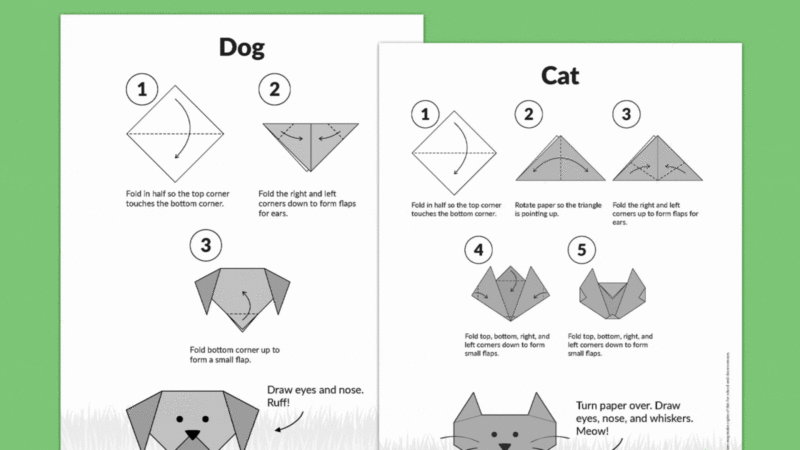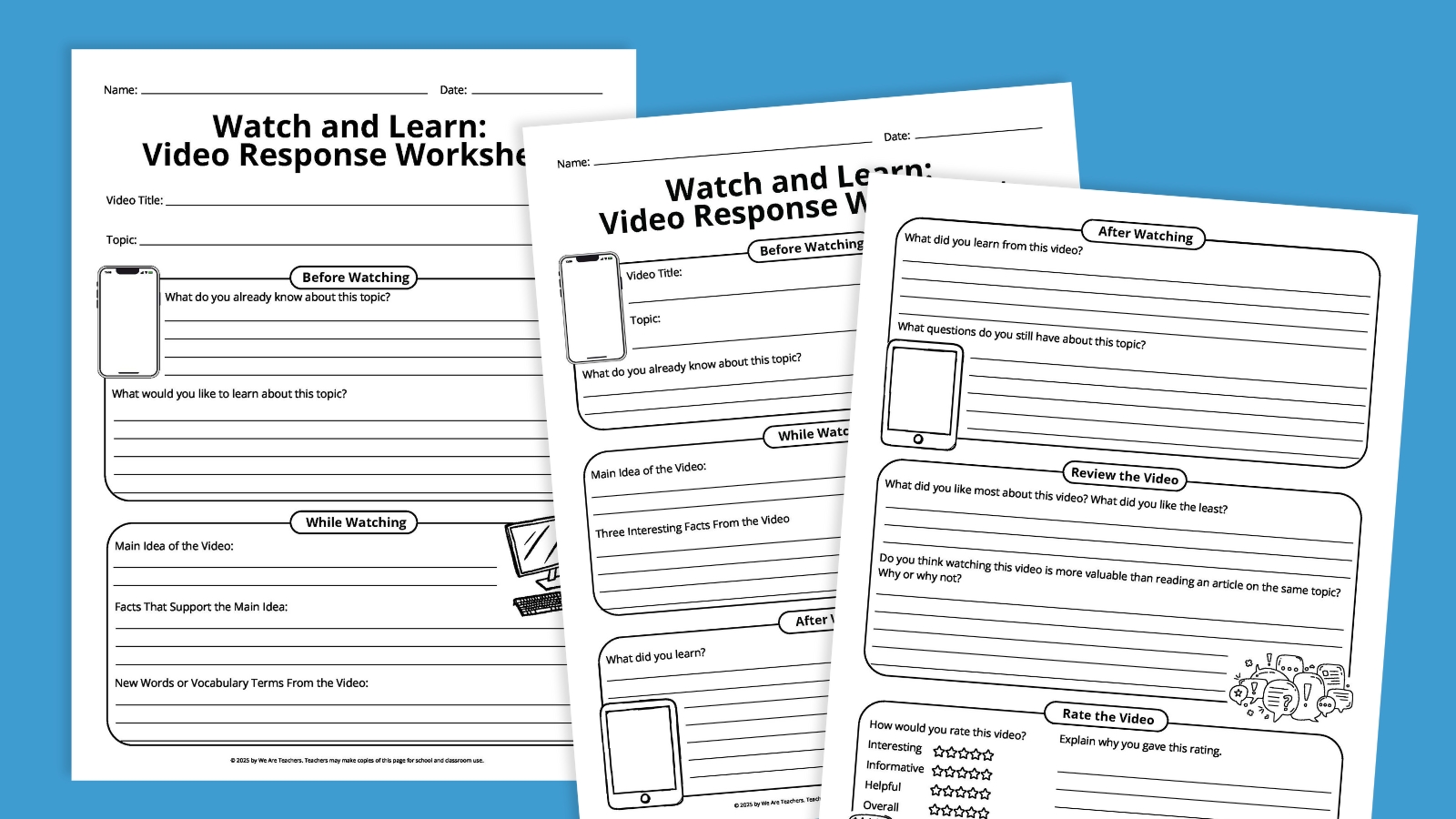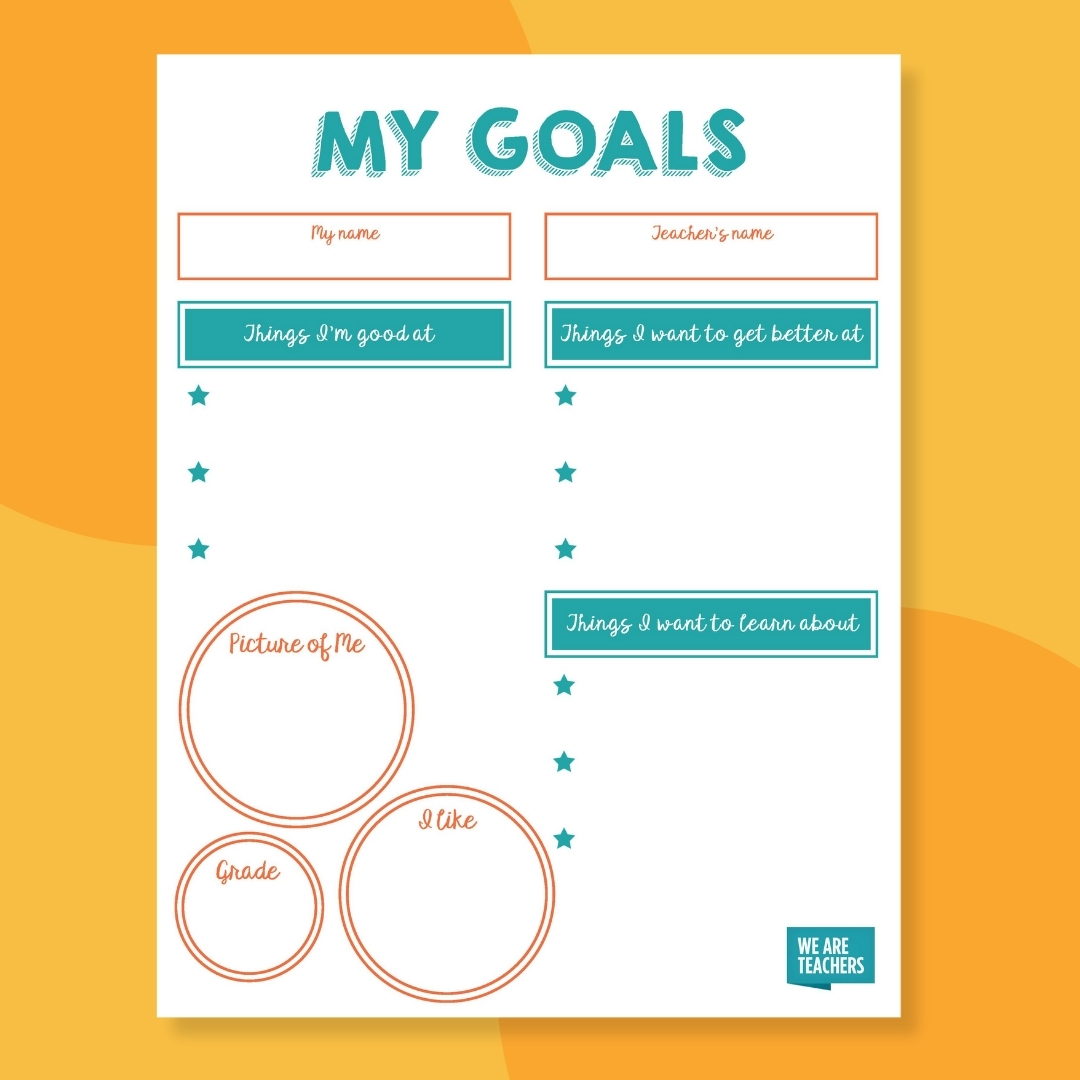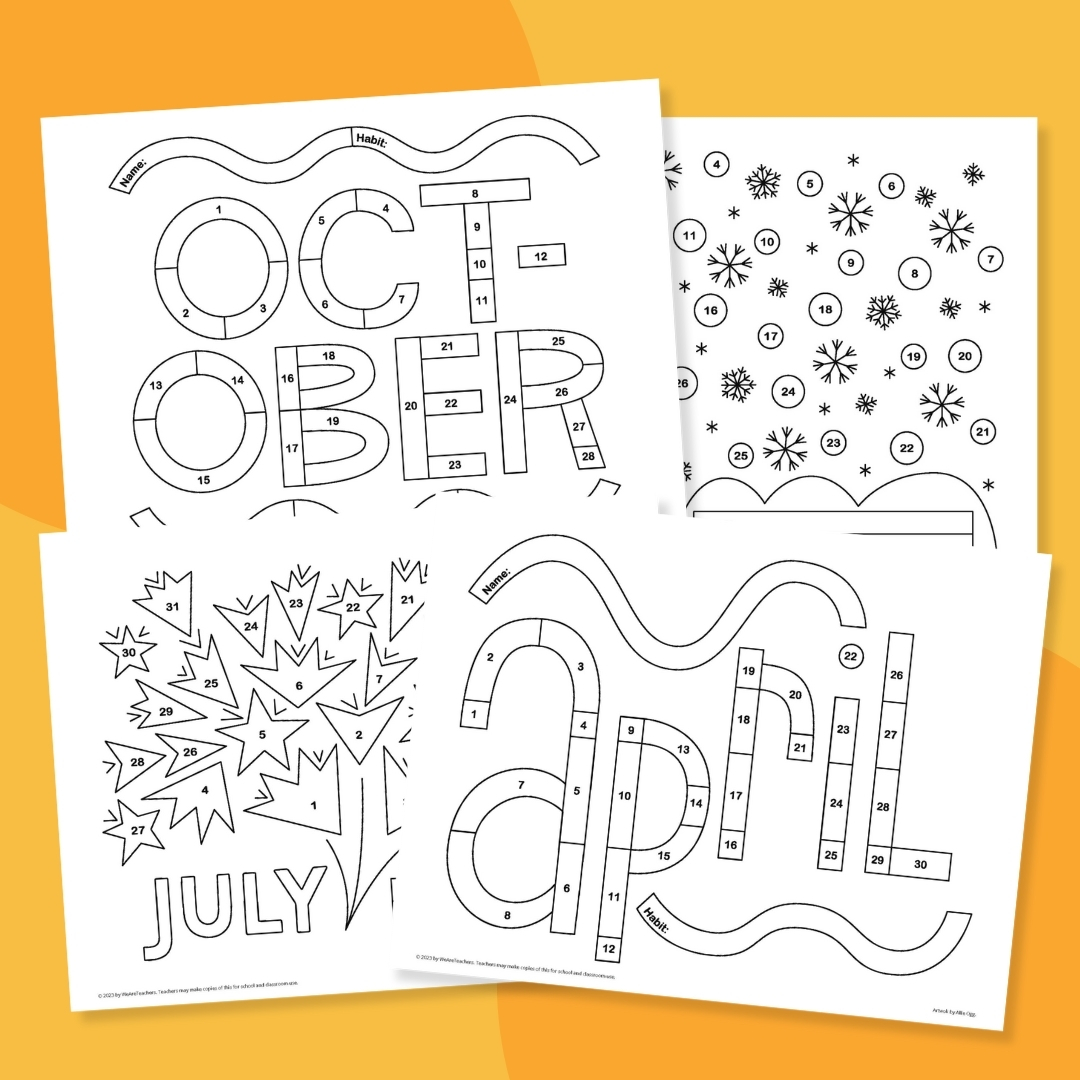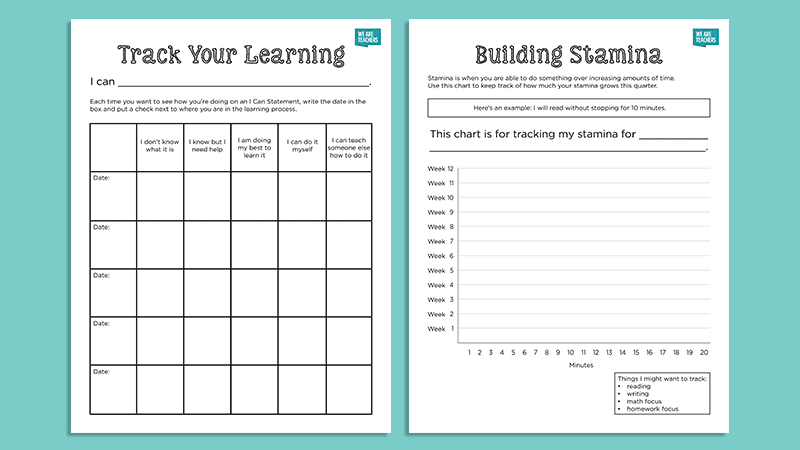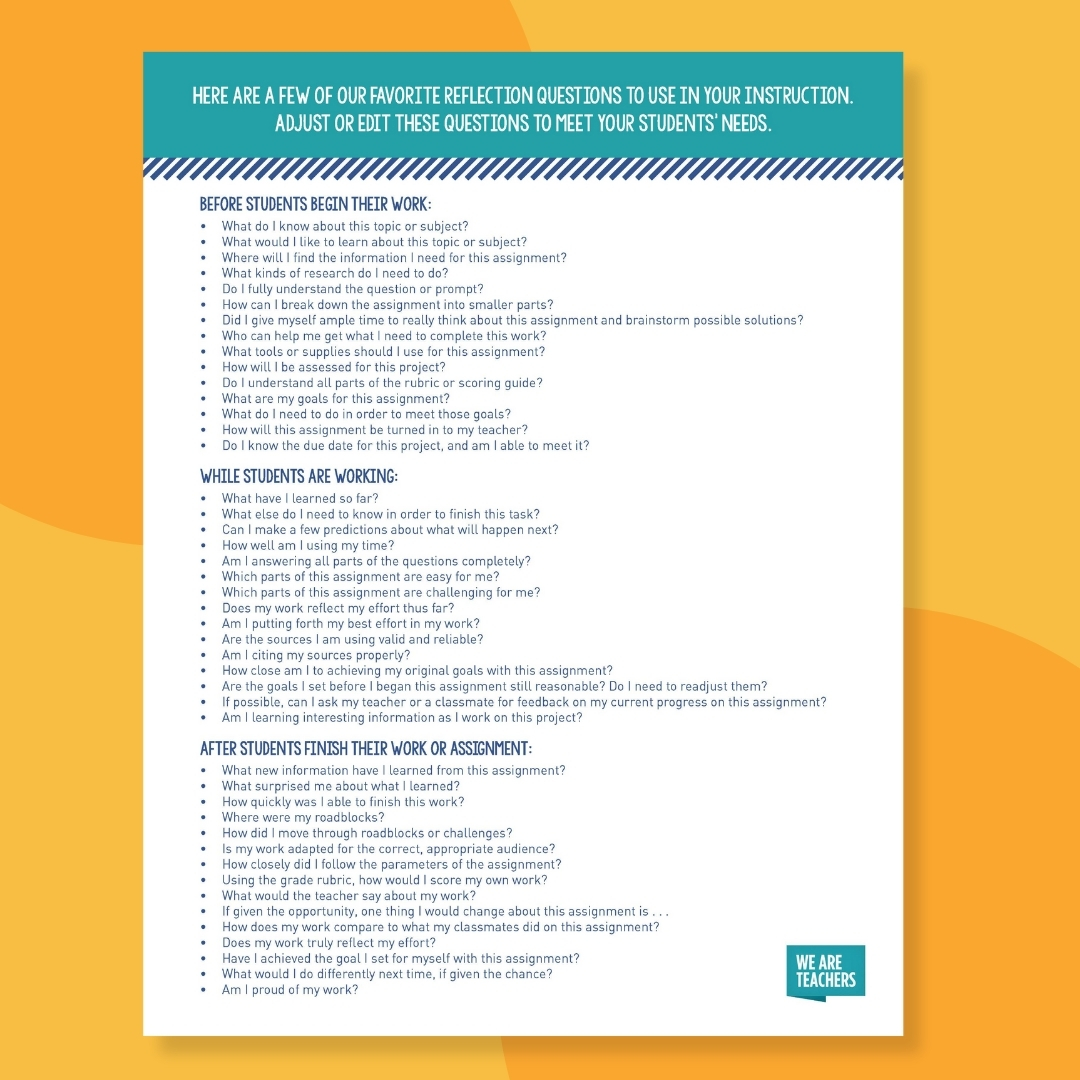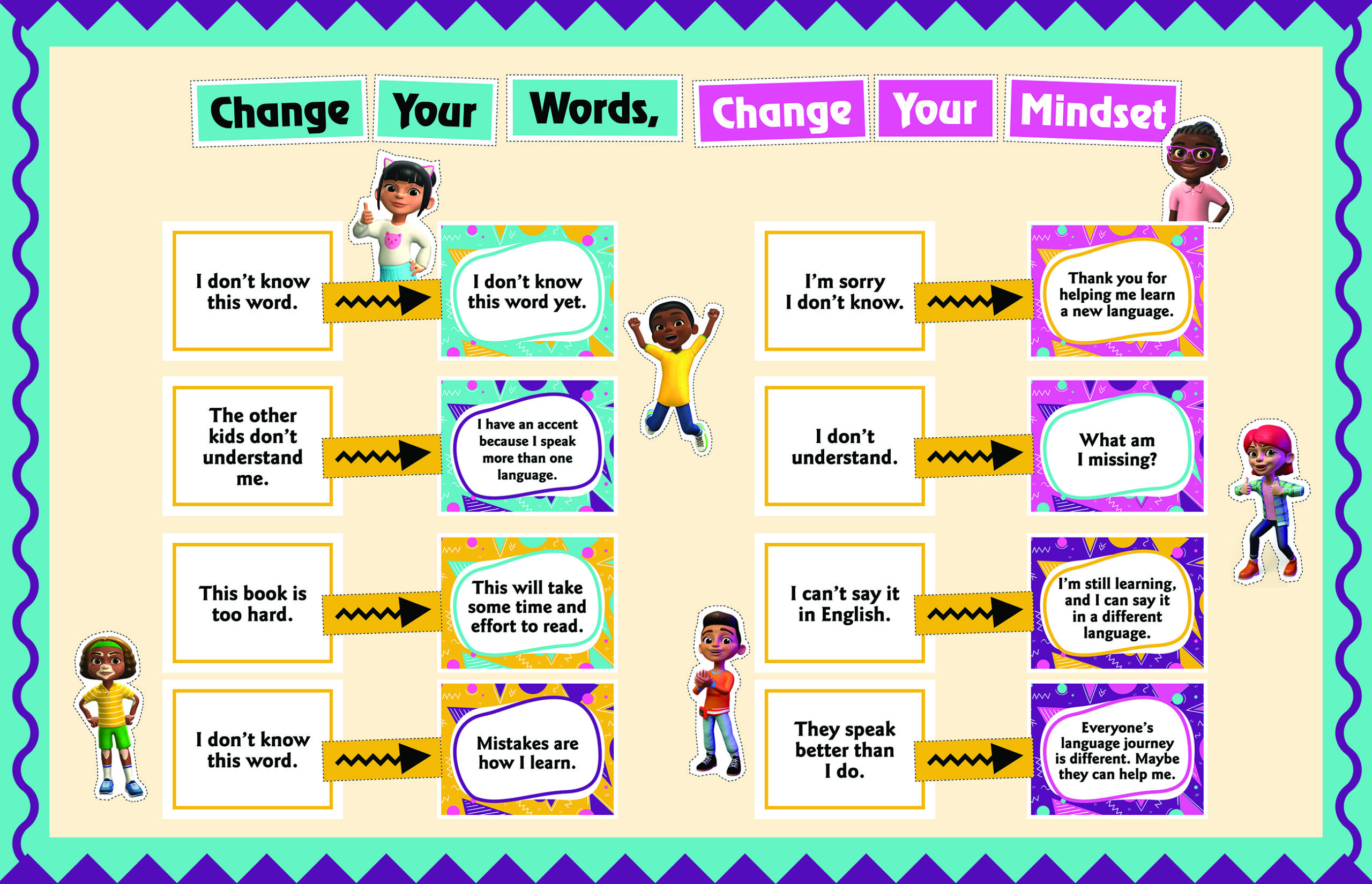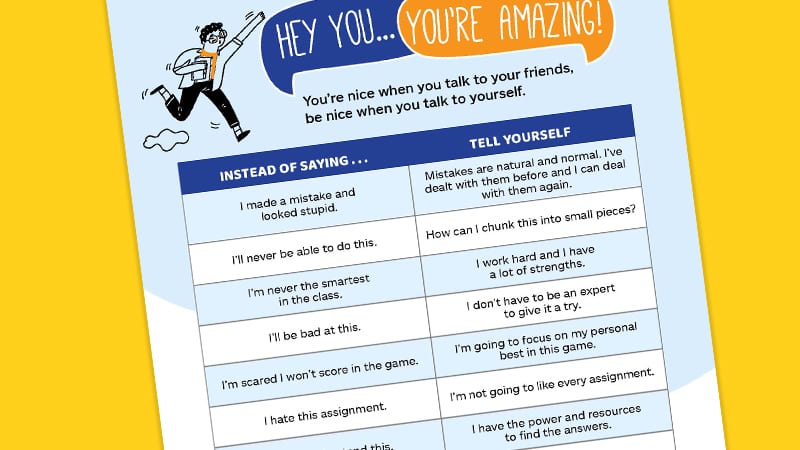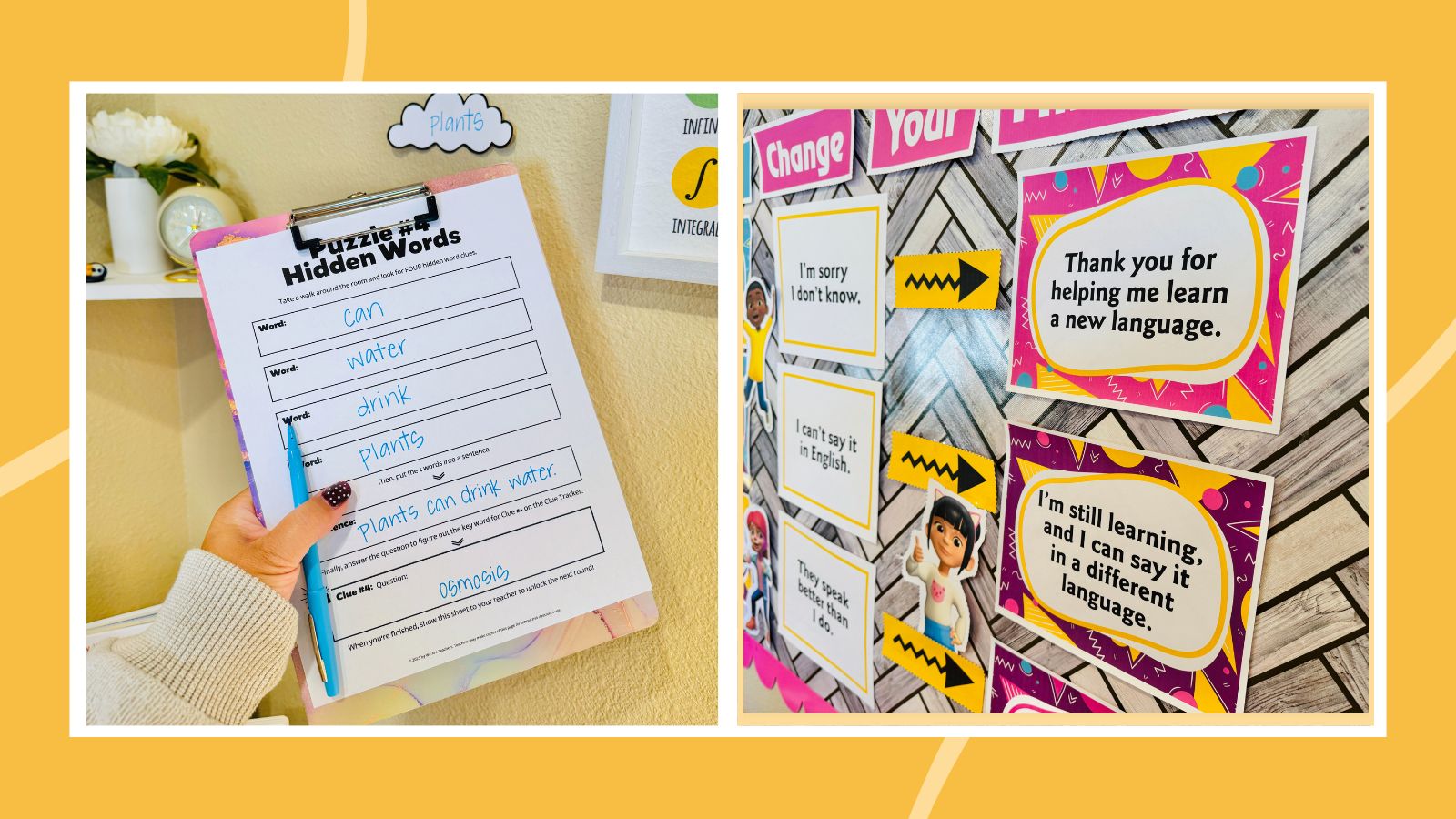
25 Growth Mindset Activities, Strategies, and Classroom Decor
Looking for ways to help kids embrace their mistakes and keep working toward success? Growth mindset activities could be the answer. This concept may not be a miracle cure for all students, but recent research shows that embracing a growth mindset has a demonstrable positive effect on learning. It helps kids learn more when compared to their fixed-mindset peers. Use our favorite growth mindset activities and strategies to remind kids that they really can learn new things, and that the effort is just as important as the achievement.
Jump to:
What is a growth mindset?
Psychologist Carol Dweck made the idea of fixed vs. growth mindsets famous with her book Mindset: The New Psychology of Success. Through extensive research, she found that there are two common mindsets, or ways of thinking:
- Fixed mindset: People with a fixed mindset feel that their abilities are what they are and cannot be changed. For instance, a person may believe that they’re bad at math, so they don’t bother to try. Conversely, a person may feel that because they’re smart, they don’t need to work very hard. In either case, when a person fails at something, they simply give up.
- Growth mindset: Those with this mindset believe that they can always learn new things if they make enough effort. They embrace their mistakes, learning from them and trying new ideas instead.
Dweck found that successful people are those who embrace a growth mindset. Though we all alternate between the two at times, focusing on a growth-oriented way of thought and behavior helps people adapt and change when needed. Instead of thinking “I can’t do this,” these people say, “I can’t do this YET.”
Growth mindset is key for learners. They must be open to new ideas and processes and believe they can learn anything with enough effort. Teach kids to make this mindset their default with classroom growth mindset activities like these.
Learn more: Growth Mindset vs. Fixed Mindset: A Practical Guide for Teachers
Growth Mindset Activities for Kids and Teens
Work these activities into your lesson plans or social-emotional learning time, or try them at morning meetings to give kids a boost of confidence each and every day. All of them work great at any age, whether you want ideas for elementary school or growth mindset activities for middle school or high school.
1. Read growth mindset books
These read-alouds are perfect for story time, but don’t be afraid to try them with older students too. In fact, picture books can spark all sorts of interesting conversations among high schoolers!
Try it: Perfect Read-Alouds for Teaching Growth Mindset
2. Research famous failures
Chances are good your students know the story of gymnast Simone Biles and her amazing comeback after a very public “failure.” So many famous people only accomplished their dreams after many years of trying. Share some famous failures with your students, then have them round up more famous failure stories on their own. They can write an essay, make a presentation, or even just share the stories during a morning meeting as inspiration.
3. Learn to fold origami
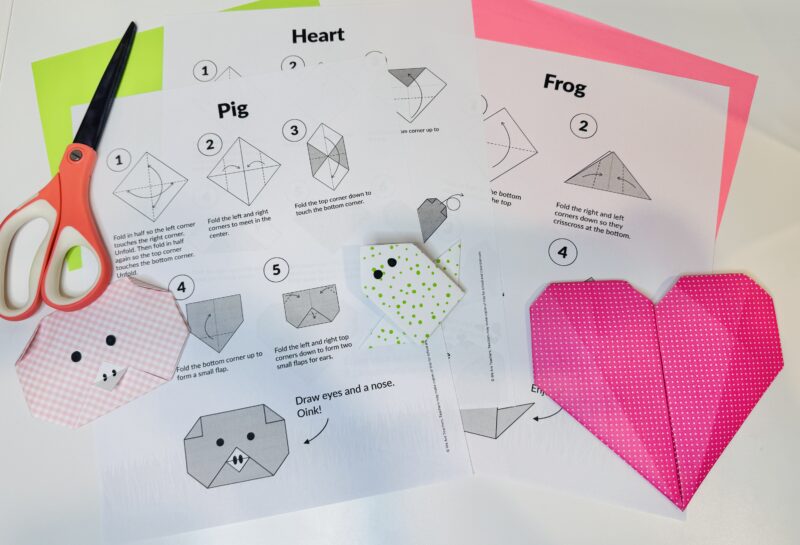
Pass out square pieces of paper, then hold up an origami bird and ask kids to fold their own. Don’t provide any instructions at this point; just give them the paper and make the request. After a few minutes, talk about their frustrations. Then give them printed instructions to follow, and encourage them to ask for help if they need it. When everyone is finished, discuss learning as a process that means trying and failing, then trying again.
4. Watch a growth mindset video
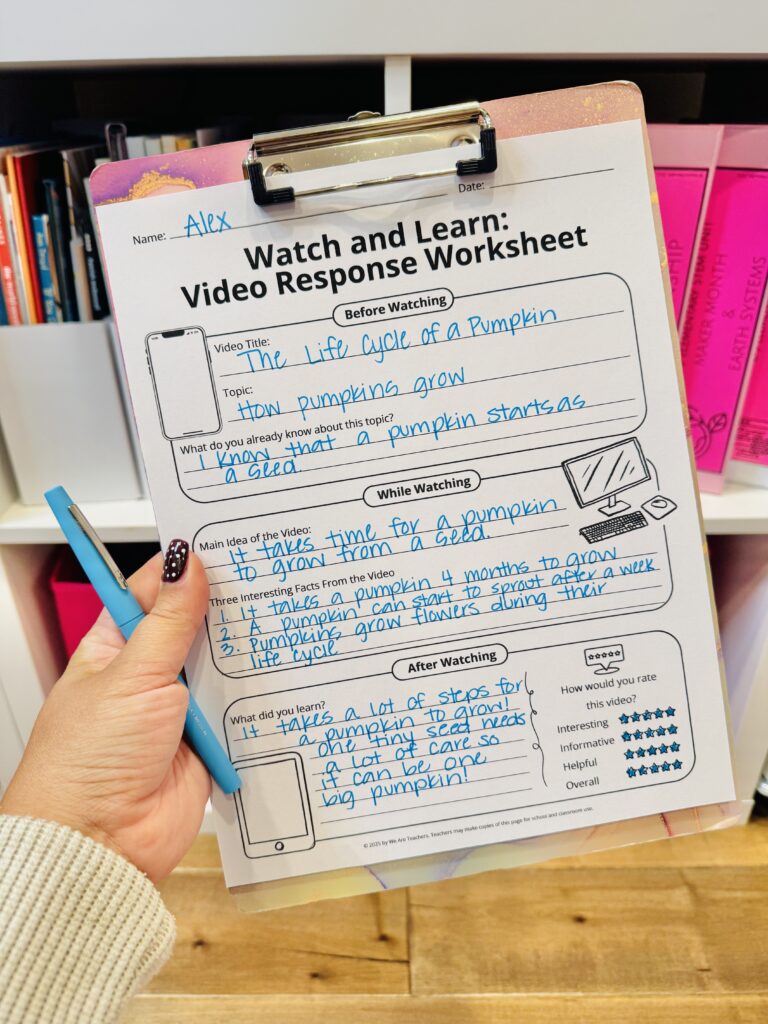
Look for videos that you can share with your students, from TED talks to episodes of some of their favorite shows! Here are a few to get you started:
5. Try growth mindset exit tickets

At the end of a lesson or day, use a growth mindset–oriented exit ticket. Pose a question like “What can you do now that you couldn’t do at the beginning of class?” or “What do you find most challenging about this topic, and how will you work to overcome the challenge?”
6. Use growth mindset quotes as writing prompts
Share your favorites from our collection of growth mindset quotes with your students, and ask them to reflect on their feelings, personal experiences, or thoughts in response. You can also have kids choose a favorite quote and illustrate it or turn it into a poster.
Try it: Growth Mindset Quotes To Inspire Hard Work and Perseverance
7. Set SMART goals

Working toward specific goals helps students stay focused on their progress. Help them set goals that are specific, measurable, attainable, relevant, and time-bound. Then, show them how to map out smaller steps they’ll take on the journey to meeting those goals. Remember that the milestones can be just as important as the finish line.
Try it: How To Do Goal-Setting With Your Students This Year
8. Introduce habit trackers
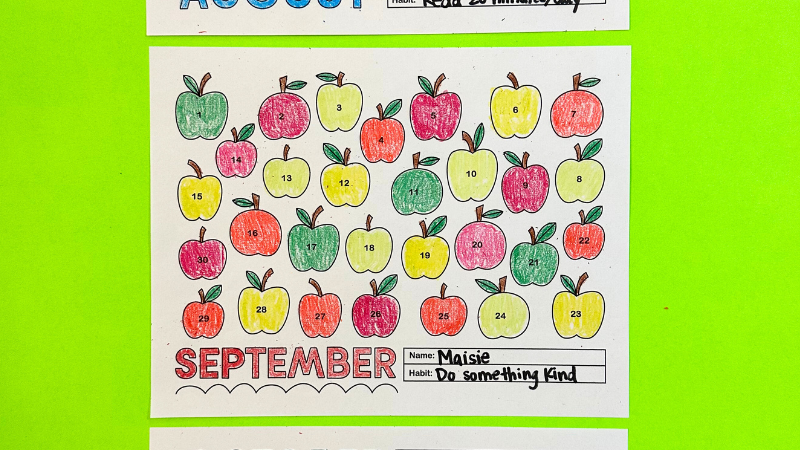
New behaviors take time to become habits, and what seems difficult to remember at first can easily become part of your daily routine when you track it. Encourage kids to choose a habit they want to track each day, such as reading for 15 minutes, spending less than 2 hours on screens outside of school, or doing a chore without needing a reminder. Then, use our free printable habit trackers to help them see their progress. This is a fun way to remind kids that what seems impossible at first can become a healthy habit over time.
9. Throw everything at the wall
Your students are going to love this one! Introduce them to the phrase “Throw everything at the wall and see what sticks,” and talk about how it fits into a growth mindset. Then, pose a difficult problem or challenge, and ask each student to write down an idea for solving or overcoming it. Encourage them to be creative as they brainstorm, because all ideas are worth exploring. Then, have students crumple up their papers, line up, and literally throw them at the wall! Open them up one at a time, talk about the suggestions, and use a piece of tape to stick up anything that works.
10. Build stamina over time

When your goal is big, it’s much easier to break it into smaller chunks and build up your stamina a bit at a time. For instance, if you’d like to start running 5 miles a day, it’s best to start with shorter distances and work your way up. Kids can do the same with academics: If they want to read 15 minutes a day, they can start at just 5 minutes and add one or two each day until they reach their goal.
11. Post a YET chart
Post a piece of chart paper with the phrase “I can’t do this YET” in the middle. Ask students to write something they can’t do yet but want to learn on a sticky note, and add it to the chart. From time to time (morning meetings are perfect for this), revisit the chart and make updates. Move accomplished goals to a “I CAN do it!” chart, and ask students to add new goals to replace them.
12. Celebrate a “Mistake of the Week”
Growth mindset activities teach us that mistakes are OK because we can learn from them. Establish a regular practice of recognizing a mistake and talking about what went wrong. For example, if many students missed one particular problem on a math test, highlight that question and share some of the incorrect answers. As a class, discuss what mistakes led to the error, then redo the problem together. Reinforce the idea that mistakes are just learning tools every chance you get by encouraging kids to reflect on and learn from them.
13. Track learning progress

Sometimes we get so wrapped up in the process that we forget to recognize our progress! That’s why a learning tracker can be so helpful for students. When they record their progress daily and then review it from time to time, they’ll see just how far they’ve come. That’s what growth mindset is all about!
14. Attempt a 3-Try Drawing
Give students one minute to draw a specific object, like a cat. Then, give them one minute to try again from scratch, using what they learned from the first attempt. Finally, give them one minute to try one last time. Compare their three efforts to see how they improve from one drawing to the next. This is one of those growth mindset activities you can tweak for a variety of different “3-Try” tasks.
15. Rewrite your story
Try this fun writing assignment: First, students write a personal essay telling the story of a time when they failed. Then, they write a part two, telling the same story but changing it so that in this version, they succeed. The point of this exercise isn’t to focus on the “if only I had …” aspect. Instead, it should remind students to take advantage of “do-overs” when they come around, and keep a positive attitude even when they don’t get it right.
Teaching Strategies To Support a Growth Mindset
Educators can both model and encourage growth mindsets in their students with simple strategies like these.
16. Focus on praising the process instead of the person
When you praise a person, you’re praising traits, which they don’t really have any control over. When you praise their process, you show that you value their actions and efforts, which encourages them to keep trying even when things are difficult. Here are some examples of person praise vs. process praise:
- You aced that test! You’re so smart. ==> You aced that test! You must have studied hard.
- Of course you made the team. You’re very talented. ==> You made the team! I’m so proud of all your practice and hard work.
- You got an A in math! Good job! ==> You raised your math grade by 8 points this semester. You really persevered!
17. Create an alternative progress report
There’s value in the traditional letter grades, but they definitely don’t tell the whole story about a student’s progress. Grades are more about the end accomplishment, not the hard work that got a student there. Try using an alternative report that emphasizes growth mindset behaviors, like perseverance and hard work.
Learn more: I Created an Alternative Progress Report To Show My Student’s Growth—Outside Academics
18. “Try 3, then ask me”
You may be familiar with the phrase “Ask three, then me.” It requires students to ask three classmates for help before asking their often-busy teacher. You can use a similar strategy to support growth mindset too. When students are struggling, encourage them to try three different strategies before they ask for help. For example, if a student doesn’t know the meaning of a word, they can use verbal context clues, look at the page’s illustration, or look the word up in a dictionary. This strategy builds problem-solving skills in addition to fostering a growth mindset.
19. Ask reflection questions before, during, and after lessons and assignments
To truly see growth, we have to reflect on where we started and where we wound up. Teach kids to make reflection a habit, and they’ll build a growth mindset naturally over time. Ask questions like “Which parts of this assignment are easy or challenging for me?” and “What would I do differently next time, given the chance?”
20. Use project-based learning
Project-based learning uses real-world projects and student-directed activities to build knowledge and skills. Kids tackle issues that matter to them, making learning meaningful. Many students start these projects thinking there’s no way they’ll actually be able to create change or solve problems. But as they work, their mindset begins to shift, and they realize that big things are possible when you take them one smaller step at a time.
Try it: What Is Project-Based Learning? and Real-World Project-Based Learning Ideas
21. Set up an escape room
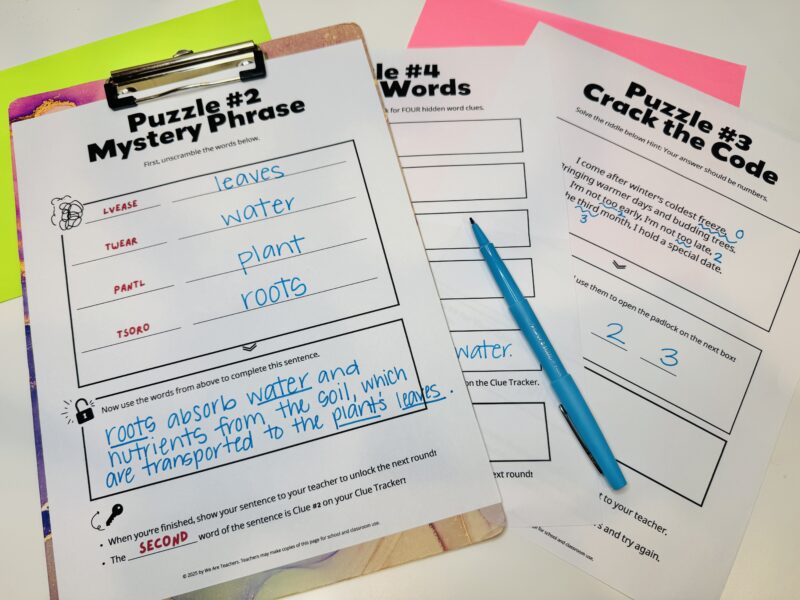
Any escape room activity can encourage students to try new ideas and work together to figure out the answers. Grab our free bundle with a guide and printables to put together your own.
22. Experiment with coding and robotics
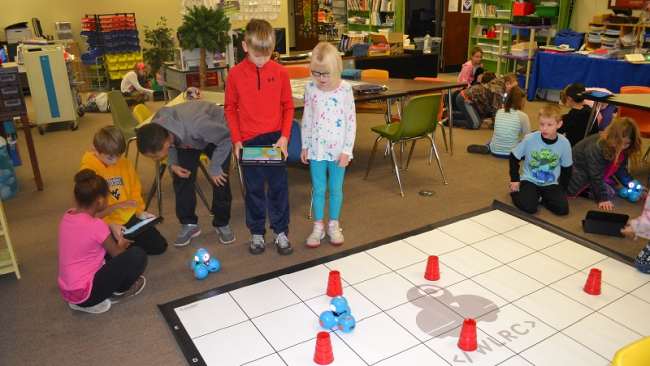
When students learn to code, “What if we try this?” becomes their go-to phrase. As you give your students the time they need to discover what works, the reward is in the process. Student coders become master revisionists, which allows them to deepen creativity to find success.
Learn more: How Coding and Robotics Build a Growth Mindset in Your Students
23. Share phrases that nurture a growth mindset

Show students examples of fixed-mindset statements, and compare them with more growth-oriented examples. When students use a fixed-mindset phrase, ask them to restate it from a growth standpoint instead. Get this free poster for your classroom to keep the language fresh in their minds.
24. Post a “Change Your Words, Change Your Mindset” bulletin board

The things we say to ourselves are just as important as the efforts we make. Start by sharing fixed-mindset statements like “I don’t know how” or “This is too hard.” Ask students to help you shift those statements to a growth mindset instead, saying “I don’t know how yet” or “This is hard, but I’ll keep trying.”
25. Encourage positive self-talk
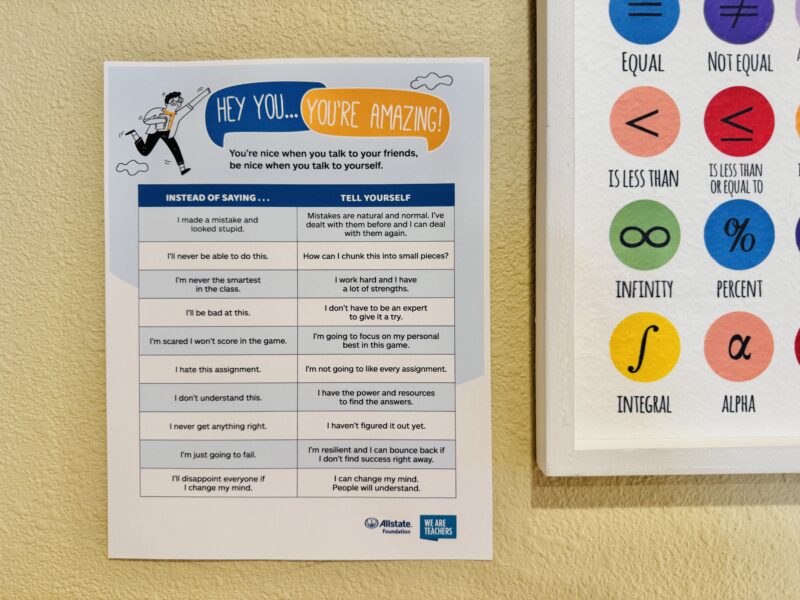
Teens are especially likely to be hard on themselves. Use our free poster as a springboard for discussion and growth mindset activities for kids in middle school and high school.
Don’t forget to grab your free printable growth mindset posters!
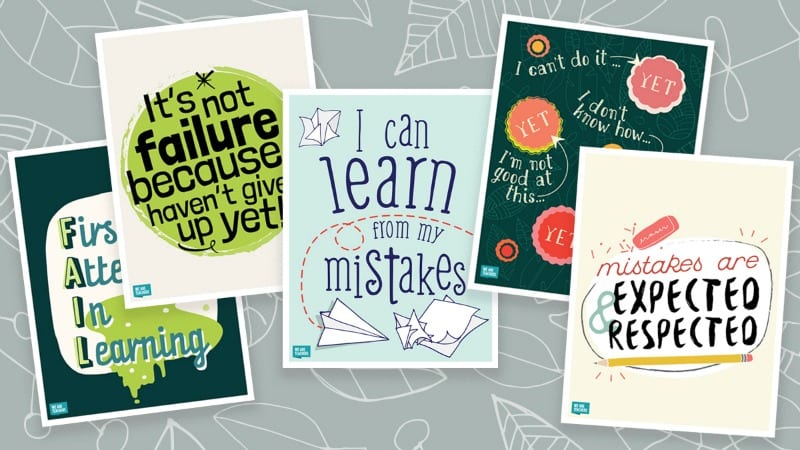
Post them in your classroom, in the halls, even on the bathroom stalls to reinforce the growth mindset taught through the activities for kids above! Just fill out the form on this page to get them.
If you liked these growth mindset activities for kids, Check Out Our Free Bundle of Self-Esteem Worksheets!
Source link


